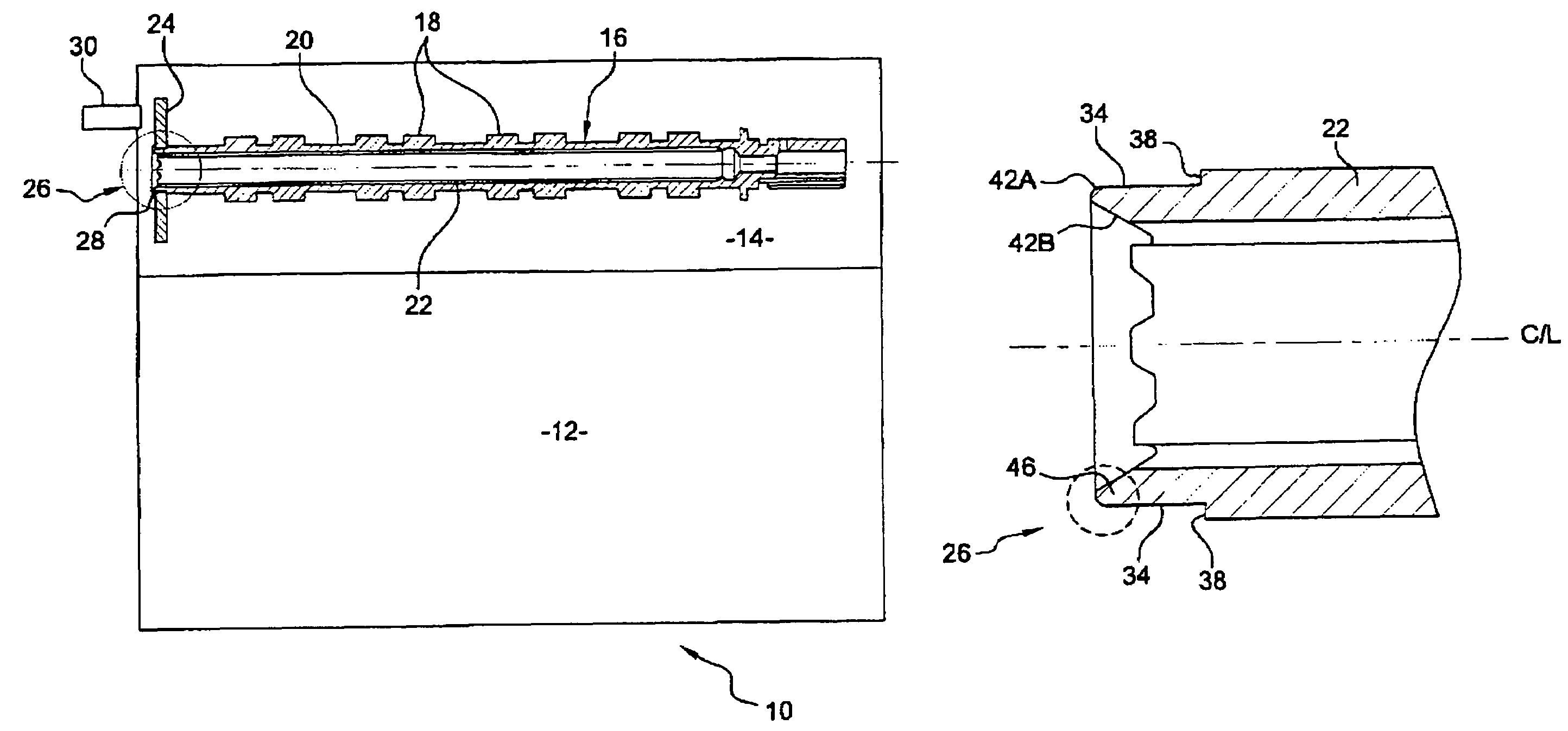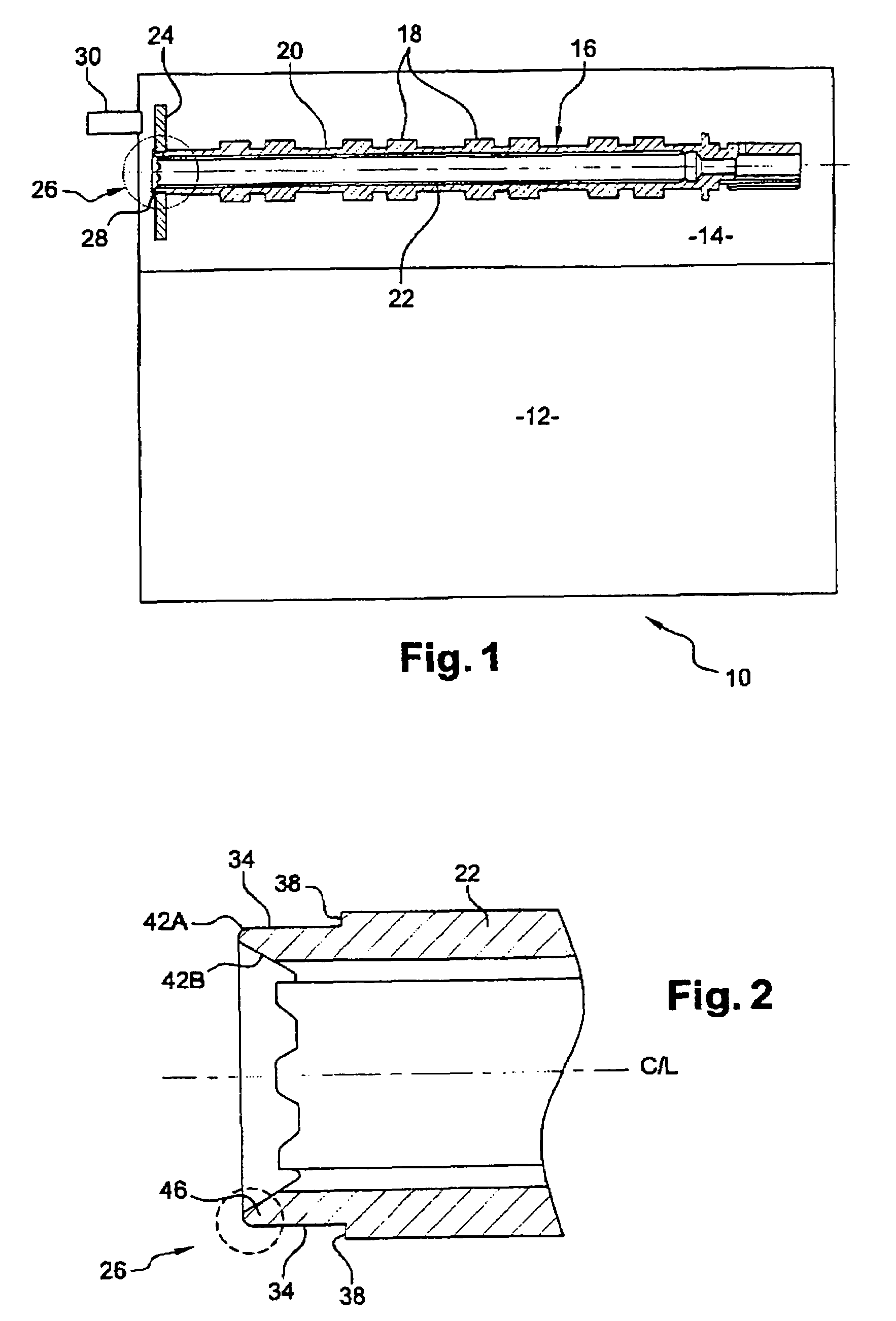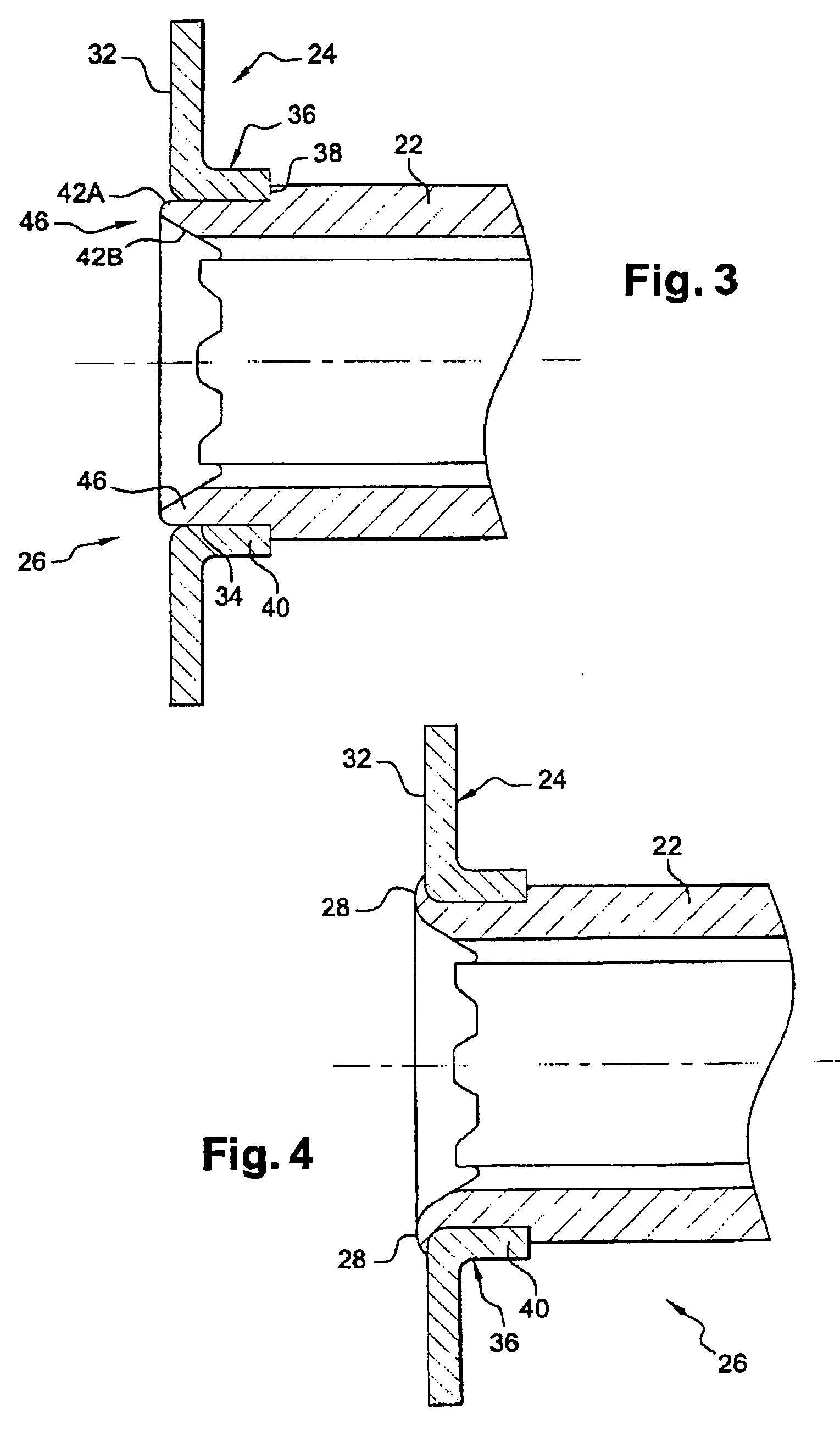Camshaft arrangements for engines
- Summary
- Abstract
- Description
- Claims
- Application Information
AI Technical Summary
Benefits of technology
Problems solved by technology
Method used
Image
Examples
Embodiment Construction
[0029]Referring to the drawings, an engine 10 includes a cylinder block 12 on which is mounted a cylinder head 14. An overhead camshaft assembly 16 runs in the cylinder head 14. The camshaft 16 is a tubular camshaft and is built up from a series of camshaft elements that include a series of camshaft lobes 18 and bearing journals 20, each of which is interlocked onto a tubular support shaft 22.
[0030]The camshaft 16 carries a further camshaft element in the form of a rotation sensor target member 24 that is mounted onto one end 26 of the camshaft 16. The target member 24 is fixed onto the camshaft 16 by a rivet head 28 formed from plastic deformation of the support shaft 22 itself, the support shaft 22 acting as the shank of the rivet 22, 28 thus formed. The technique for formation of the rivet head 28 will be described in greater detail below. The rivet head 28 keeps the target member 24 in place on the support shaft 22, at least from the point of view of axial location and preferabl...
PUM
| Property | Measurement | Unit |
|---|---|---|
| Deformation enthalpy | aaaaa | aaaaa |
Abstract
Description
Claims
Application Information
 Login to View More
Login to View More - R&D
- Intellectual Property
- Life Sciences
- Materials
- Tech Scout
- Unparalleled Data Quality
- Higher Quality Content
- 60% Fewer Hallucinations
Browse by: Latest US Patents, China's latest patents, Technical Efficacy Thesaurus, Application Domain, Technology Topic, Popular Technical Reports.
© 2025 PatSnap. All rights reserved.Legal|Privacy policy|Modern Slavery Act Transparency Statement|Sitemap|About US| Contact US: help@patsnap.com



